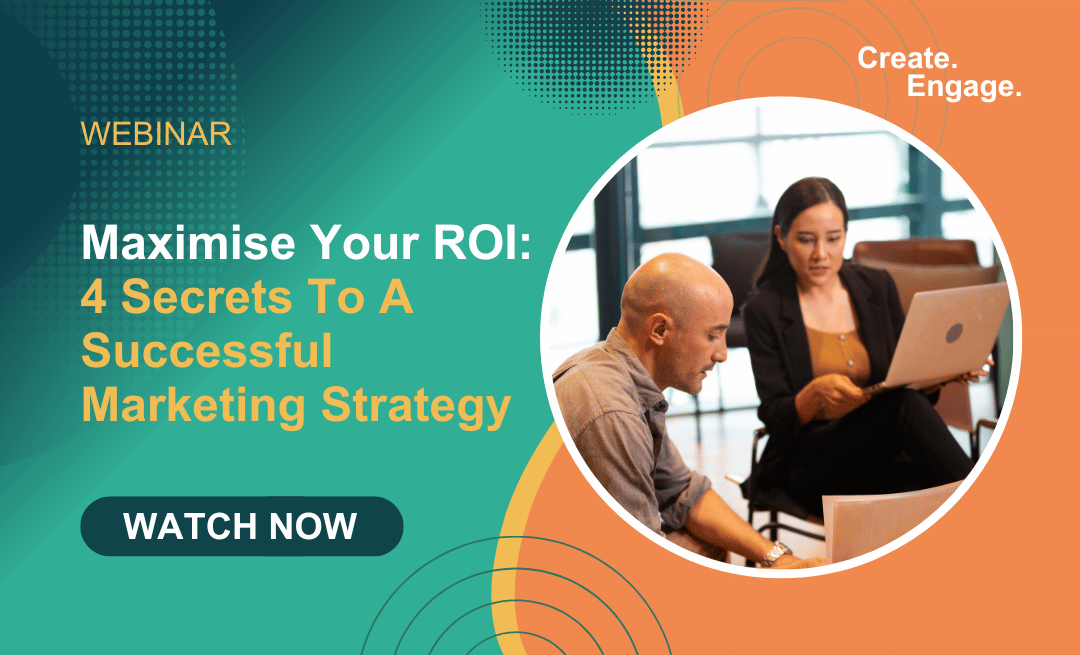Webinars have been a lifeline to many consultancies since the start of the pandemic. With conferences, coffee dates and in-person BD meetings grinding to a halt, webinars have helped to generate new leads, establish authority and grow revenue during an otherwise bleak period.
And, with remote and blended working set to continue, webinars are still going to be an effective marketing tool in the ‘new normal’.
If you’re yet to dip your toe in the webinar waters, you’re missing out. By hosting your own webinar, you’ll be able to start new conversations with potential clients while moving warm prospects along your sales funnel. Doing both at the same time with relatively little effort.
While we’ve previously highlighted the many benefits of webinars, in this article, we’ll explain the ins and outs of how you can successfully host your event.
Planning: putting your webinar together
1. Choose an engaging topic
The best webinars are ultra-focussed on how you help solve your clients’ problems.
So even though you’ll want to shout about all the great things your consultancy is doing, you should frame everything around the challenges your target clients are facing, and how you can help them overcome those challenges.
2. Pick the best format
Think about the most engaging way you could communicate your problem-solving abilities to your audience.
If you’ve got lots of statistics, processes or a framework to explain, a PowerPoint Presentation might be best. If you’re keen to convey differing opinions, a group roundtable or Q&A could cover topics in more depth.
While it’s important to demonstrate your own expertise during the webinar, we recommend inviting expert speakers from outside your business to join. That way you can extend the reach of your webinar to their network too and capitalise on the authority they’ll bring to the table.
3. Make it no longer than an hour
It’s important to remember that your attendees have taken the time out of their day to join your webinar so don’t make it too long. Even the most engaging webinars can get tiresome so be sure to limit yours to 60 minutes max.
4. Schedule it at the right time
While you can host a webinar at any time, we’ve found that 10am or 2pm are the golden slots for webinars. Just be sure to avoid Mondays and Fridays, when people aren’t fully in ‘work mode’.
5. Promote it, promote it, and promote it again
At least one week before your webinar, you should promote your webinar to your email lists, your social channels and anywhere else your clients hang out.
Then make sure to send at least two reminder emails to everyone who signs up: one the day before, and one an hour before. This can often be automatically generated by your webinar platform e.g. Zoom, ClickMeeting etc.
6. Practice makes perfect
A couple of days beforehand, we always recommend doing a trial run of your webinar with all your speakers.
Aside from showing everyone the format and the technology, it lets you address any concerns, confirm the running order and discuss the content you’re going to cover so you’re well prepared for the event itself.
Execution: making it go well on the day
1. Avoid any desktop interruptions
The last thing you need is a client email popping up mid-webinar. Before you launch your webinar, close your email, web browser, file manager and anything else that might send you a notification.
2. Get there early
Most platforms will allow a ‘practice mode’ before broadcasting your webinar live to your audience. So, on the day of your webinar be sure to enter the webinar room at least 15 minutes before the start time, especially if you’re welcoming speakers from outside the business.
This time is crucial to make everyone feel at ease, ensure all mics, cameras and presentation slides are working, and fix any potential technical problems.
3. Wait a minute
Once you’re broadcasting your webinar to the audience, we suggest waiting for at least one minute before introducing your content. We tend to call this ‘padding’ where the host explains that you’re waiting for a few more people to arrive and that you’ll be starting shortly. It helps those who have previous overrunning meetings to get there in time and not miss anything.
You can even pop up a holding slide or a count down timer, if you’d prefer to keep your microphone and cameras off while you wait.
4. Do all your selling at the start
Your audience is only interested in how you can improve their business, so you should keep content about your consultancy to a minimum.
That said, webinars are a great opportunity to talk about your consultancy to a captivated audience. So we’d recommend introducing your business at the very start, for no more than 5 minutes, when people are less likely to drop off.
5. Explain how interaction works
During your intro, explain to everyone how to submit their questions and how they will be addressed. Will you respond as you go or answer them at the end? Audience engagement is key to a successful webinar so we’d recommend leaving at least 20 minutes free at the end for a Q&A.
We also suggest having some pre-prepared questions for your Q&A, especially if your audience is a bit quiet – it can encourage them to get involved once the first couple of questions are out of the way.
6. Follow-up without fail
Once your webinar’s over, email everyone with the recording, along with a copy of any slides that were used (if applicable).
We’d recommend sending the recording to everyone who registered regardless of whether they attended the live event.
This keeps your consultancy fresh in everyone’s minds, and gives you another chance to engage with anyone who missed the webinar.
Make the Most of your Webinar
Your webinar is a goldmine of useful content, so don’t let it go to waste. You could keep the engagement going even longer by writing a blog series about your webinar, turning it into a podcast episode, or using it as a lead magnet on your website.
Creating and delivering webinars aren’t all that complicated. You just need to know what to do and when in order to host a professional and engaging webinar.
If you’re thinking about hosting a webinar series but would like some help getting started, we can help – get in touch for a chat.


